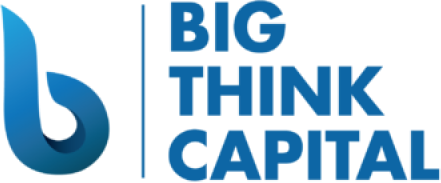Mitigating the Impact of Rising Interest Rates on Small Business Loans
Estimated reading time: 5 minutes
- Stay informed about economic indicators.
- Plan for the long term in your financial strategy.
- Seek expert guidance for financing solutions.
Table of Contents
- Understanding Rising Interest Rates
- The Impact of Rising Interest Rates on Small Business Loans
- Effective Financial Management Tools and Techniques
- Practical Takeaways for Business Owners
- Conclusion
- FAQ
Understanding Rising Interest Rates
Over the past few years, interest rates have fluctuated, influenced by factors such as inflation, economic growth, and Federal Reserve policies. As the economy rebounds, increased demand for credit can lead to higher rates. According to the Federal Reserve Economic Data, the average interest rate on commercial and industrial loans increased from 4.3% in early 2022 to approximately 7% by the end of 2024.
This upward trend can make financing your small business more expensive, impacting operational costs and investment plans. Knowing how to manage these rising rates effectively can position your business for long-term success.
The Impact of Rising Interest Rates on Small Business Loans
When interest rates rise, it affects small business loans in several ways:
- Increased Borrowing Costs: Higher interest rates mean more expensive repayments, straining cash flow for expansion, working capital, or equipment financing.
- Reduced Loan Approvals: Lenders may tighten their criteria, making it challenging to secure funding, particularly for those with less established credit histories.
- Cash Flow Management: Higher loan payments may necessitate cuts in other areas, hindering growth.
- Shifts in Financing Choices: Business owners may turn to alternative financing strategies as traditional loans become less appealing.
Effective Financial Management Tools and Techniques
To mitigate the impact of rising interest rates, small business owners can employ several financial management strategies. Here are some actionable techniques:
1. Review and Adjust Your Financial Plan
A comprehensive financial plan forms the backbone of your business strategy. Here are steps to consider:
- Analyze Current Debt: Identify existing loans and assess any variable interest rate loans that may become more expensive. Aim to consolidate or refinance these loans when rates dip.
- Budget for Interest Rate Changes: Update financial forecasts to account for potential interest rate increases and develop response strategies.
- Focus on Essential Investments: Prioritize investments that yield quick returns or are necessary for daily operations to conserve cash flow.
2. Diversify Your Funding Sources
Relying on a single financing option can be risky:
- Explore Alternative Lending: Consider a variety of financing options that suit small businesses, including working capital advances, SBA loans, and equipment financing.
- Look into Fixed-Rate Financing: Opt for loans with fixed interest rates to secure payments against future rate increases.
- Leverage Business Credit Cards Wisely: Use business credit cards effectively for manageable expenses and cash flow, ensuring prompt payments.
3. Enhance Cash Flow Management
Improving cash flow can combat rising loan costs:
- Implement Cash Flow Projections: Develop detailed projections to anticipate cash needs for strategic funding decisions.
- Optimize Accounts Receivable: Streamline processes to encourage faster payments and consider early payment discounts to boost cash flow.
- Reduce Unnecessary Expenses: Regularly review expenses for potential cuts that free up cash for high-interest loans.
Practical Takeaways for Business Owners
As rising interest rates present challenges, it is essential for business owners to take proactive measures. Here are three key takeaways:
- Stay Informed: Monitor economic indicators and adjust strategies accordingly.
- Plan for the Long Term: Build a resilient financial strategy to withstand market fluctuations.
- Seek Expert Guidance: Consult funding experts to explore alternatives and better support your financing needs.
Conclusion
Rising interest rates pose significant challenges for small businesses in 2025, but they are not insurmountable. By understanding the financial landscape, deploying effective management strategies, and leveraging diverse funding options, business owners can navigate these changes successfully.
At Big Think Capital, we are committed to supporting small businesses through innovative financing solutions. Explore our services today or speak with a funding expert to discover how we can help you secure the funding you need to thrive in challenging economic conditions. Your success is our priority.
FAQ
1. How do rising interest rates affect my business loans?
Rising interest rates increase borrowing costs, making loan repayments more expensive and potentially reducing loan approvals.
2. What can I do to manage my cash flow better?
Implement cash flow projections, optimize accounts receivable, and reduce unnecessary expenses to maintain a healthier cash flow.
3. Where can I find expert guidance for my small business?
Consulting with funding experts like those at Big Think Capital can help you explore various financing options and strategies.






